Beef neck bones have gained significant popularity among home cooks and culinary enthusiasts for their rich flavor and versatility. Often overlooked, these bones can elevate your meals with their essential nutrients while creating hearty dishes that warm the soul. This article dives deep into the multifaceted culinary uses of beef neck bones, exploring their benefits, practical cooking techniques, and a delightful recipe you can try at home.
Using beef neck bones can lead to incredibly rich flavors and textures. This cut of meat is not only affordable but also aligns perfectly with the growing trend of sustainable cooking, where nothing goes to waste. This makes beef neck bones a wonderful addition to anyone’s kitchen.
In this piece, you will learn how to create a comforting beef neck bone soup, perfect for chilly evenings and family gatherings. We will also address some common questions about beef neck bones, illuminating their value in cooking. Whether you aim to impress at dinner or simply want to enjoy a hearty meal, cooking with this unique cut can open new culinary doors for you.
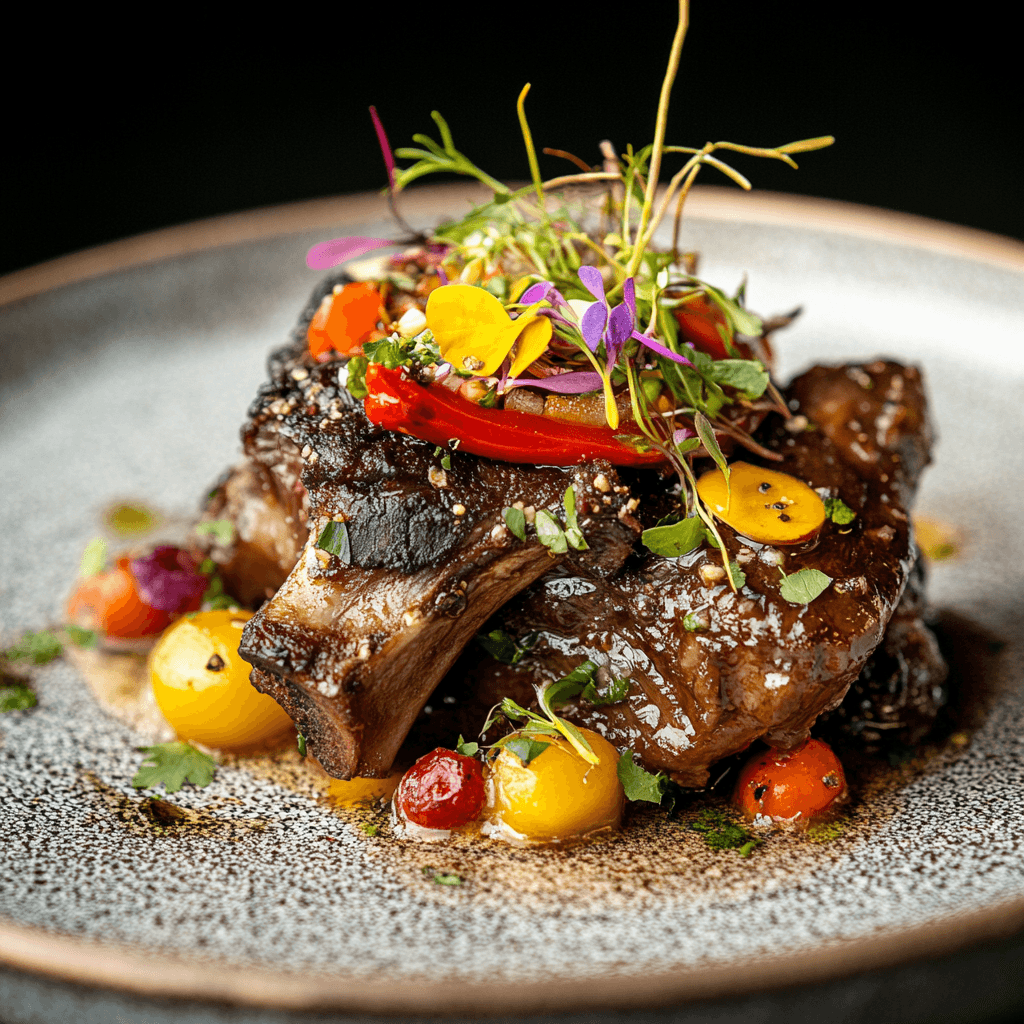
Beef Neck Bones Recipe
Ingredients
Method
- 1. Rinse the Beef Neck Bones:Start by rinsing the beef neck bones under cold running water to ensure they are clean. This will help remove any impurities or bone fragments that might be left from the butchering process.
- 2. Brown the Bones:In a large pot, heat a tablespoon of oil over medium heat. Add the neck bones and brown them on all sides for about 5-7 minutes. This step is important as it adds depth of flavor to the final dish. Make sure the bones get a nice golden-brown color.
- 3. Sauté the Vegetables:Add the chopped onions, carrots, celery, and garlic to the pot. Stir and sauté the vegetables for about 5 minutes, or until they start to soften and become fragrant. This creates a flavorful base for your stew or broth.
- 4. Add Herbs and Seasoning:Stir in the thyme, bay leaves, salt, and pepper. Ensure that the bones and vegetables are evenly coated with the seasoning. Feel free to adjust the amount of salt and pepper based on your preference.
- 5. Add Broth or Water:Pour enough water or broth into the pot to completely cover the ingredients. Bring the liquid to a boil, then reduce the heat to a low simmer. If you prefer a richer flavor, beef broth is the best choice.
- 6. Cooking Methods:Slow Cooker:Transfer the ingredients to a slow cooker. Set it on low heat and cook for 6-8 hours, or until the meat is fall-apart tender. This method gives you the best results, with the meat and flavors slowly developing over time.Pressure Cooker:If you're in a hurry, transfer the ingredients to a pressure cooker. Seal the lid and cook on high pressure for 45-60 minutes. Once done, let the pressure release naturally before opening the lid.
- 7. Strain the Broth (Optional):After cooking, remove the bones and vegetables from the pot. You can strain the broth to remove any remaining bone fragments or vegetables if you prefer a cleaner broth.
- 8. Serve:Serve the tender beef neck bones with the rich broth and vegetables. For an added touch of freshness, garnish with chopped parsley or thyme. You can also add potatoes, greens, or beans to make it a more filling meal.
Notes
- Bone Marrow: Beef neck bones are rich in marrow, which adds flavor and nutrients to the broth. If you want a richer, creamier broth, make sure to stir the marrow back into the soup or stew.
- Flavor Variations: Feel free to add other vegetables like bell peppers or parsnips for additional flavor. Adding a splash of vinegar or lemon juice right before serving can brighten the broth.
- Make-Ahead: This dish stores well in the refrigerator for up to 3 days. It also freezes well, so you can make a large batch and freeze it for later.
- Alternative Cuts: If you can’t find neck bones, beef shank or oxtail can also work well for this recipe, though they may require slightly different cooking times.
What Are Beef Neck Bones Good For?
Beef neck bones offer various culinary uses primarily due to their rich marrow and gelatin content. When cooked properly, they yield tender, flavorful meat and a nutrient-rich broth. Nutritionally, beef neck bones are an excellent source of collagen, which supports healthy joints and skin. This cut is ideal for slow-cooked dishes that allow the flavors to develop fully over time.
Furthermore, incorporating beef neck bones into soups and stews allows the preparation of delectable dishes. For example, when added to a vegetable soup, beef neck bones create a complex depth of flavor that is satisfying and nutritious. This makes them an excellent choice for anyone looking to enjoy comforting and wholesome meals, especially during winter.
Here are two actionable tips for maximizing the benefits of beef neck bones:
- Use a Pressure Cooker: If you’re short on time, consider using a pressure cooker. This tool significantly reduces cooking time while achieving tender results. Cooking beef neck bones under high pressure extracts more flavor and nutrients quickly.
Make Your Own Broth: Instead of store-bought broth or stock, try making your own using beef neck bones. Simmering bones with aromatic ingredients like carrots, celery, and onions will yield a rich, savory base for numerous recipes. This homemade broth not only enhances flavors but also ensures you know exactly what goes into your meals.
Ultimately, beef neck bones can be a cornerstone ingredient in high-quality, healthful cooking.
Are Beef Neck Bones Expensive?
When considering the cost of beef neck bones, you may be pleasantly surprised by their affordability. Generally, this cut is cost-effective compared to premium meats like ribeye or filet mignon. Prices can vary depending on your location and supplier, but many find that beef neck bones offer an excellent taste-to-cost ratio.
Shopping at local butchers, grocery stores, or farmers’ markets may yield the most competitive prices, as these sources often provide fresher products. For example, many local markets sell these bones for a fraction of the cost of more popular cuts. Furthermore, purchasing in bulk can lead to significant savings, especially if you’re preparing meals for a larger group.
One important point to consider is that using beef neck bones can extend your cooking efforts. Since they are rich in gelatin and flavor, a small amount can go a long way in creating hearty meals. For those on a budget, consider cooking large batches of soup or stew that can be frozen for later use. This allows you to maximize your cook time while minimizing food waste.
You can find more budget-friendly meal ideas in this related article.
Do Beef Neck Bones Taste Like Oxtails?
Many people tend to compare beef neck bones to oxtails due to their similar cooking methods and flavor profiles. However, while both cuts possess rich flavors, their textures differ significantly. Oxtails boast a more succulent texture owing to their higher fat content compared to leaner beef neck bones.
It is worth noting that both cuts benefit from slow cooking, allowing the connective tissues to break down into tender, juicy meat. When choosing between oxtails and beef neck bones, consider their unique characteristics. If you’re looking for deeper flavor and richness, oxtails are the way to go. In contrast, beef neck bones deliver a substantial taste that works beautifully in broths and soups.
As an illustration of how versatile beef neck bones can be, consider trying them in a traditional French onion soup. While you normally might use a beef stock, substituting with broth made from beef neck bones can add a unique twist to a classic dish. The marrow enriches the flavor profile, making it even more satisfying.
Additionally, when using beef neck bones, remember to allow them to simmer slowly, giving the flavors time to meld. This ensures that you receive the maximum benefits in taste and nutrition.
What Is a Good Substitute for Beef Neck Bones?
In cases where beef neck bones are unavailable, several substitutes can provide a comparable culinary experience. Oxtails are the most straightforward choice because they share similarities in flavor and richness. Other alternatives include short ribs, which can also capture the same depth of flavor but may contain more meat.
If you’re looking for a lighter dish, chicken or pork bones can step in perfectly. However, you’ll want to adjust your cooking times accordingly. For instance, chicken bones tend to cook faster and yield a lighter broth, while pork bones bring a different, but equally appealing flavor.
Here are two practical tips for substituting beef neck bones:
- Adjust Cooking Times: If you are using a quicker-cooking substitute like chicken or pork, reduce your cooking time accordingly. Chicken bones can create a flavorful broth in about 1-2 hours compared to the several hours required for beef neck bones.
Enhance with Other Ingredients: When substituting, consider adding more aromatic ingredients to maintain flavor intensity. Adding spices like bay leaves, thyme, and rosemary can enhance the broth’s complexity, especially if you’re using lighter alternatives.
Substituting beef neck bones doesn’t have to compromise flavor. Instead, with some thoughtful adjustments, you can still achieve a rich and satisfying meal.
Ingredients and Instructions for Cooking with Beef Neck Bones
Now that we’ve covered the versatile nature and economic benefits of beef neck bones, let’s dive into a delicious recipe for beef neck bone soup. This dish is not only easy to prepare but also essential for those chilly evenings when comfort food is a must.
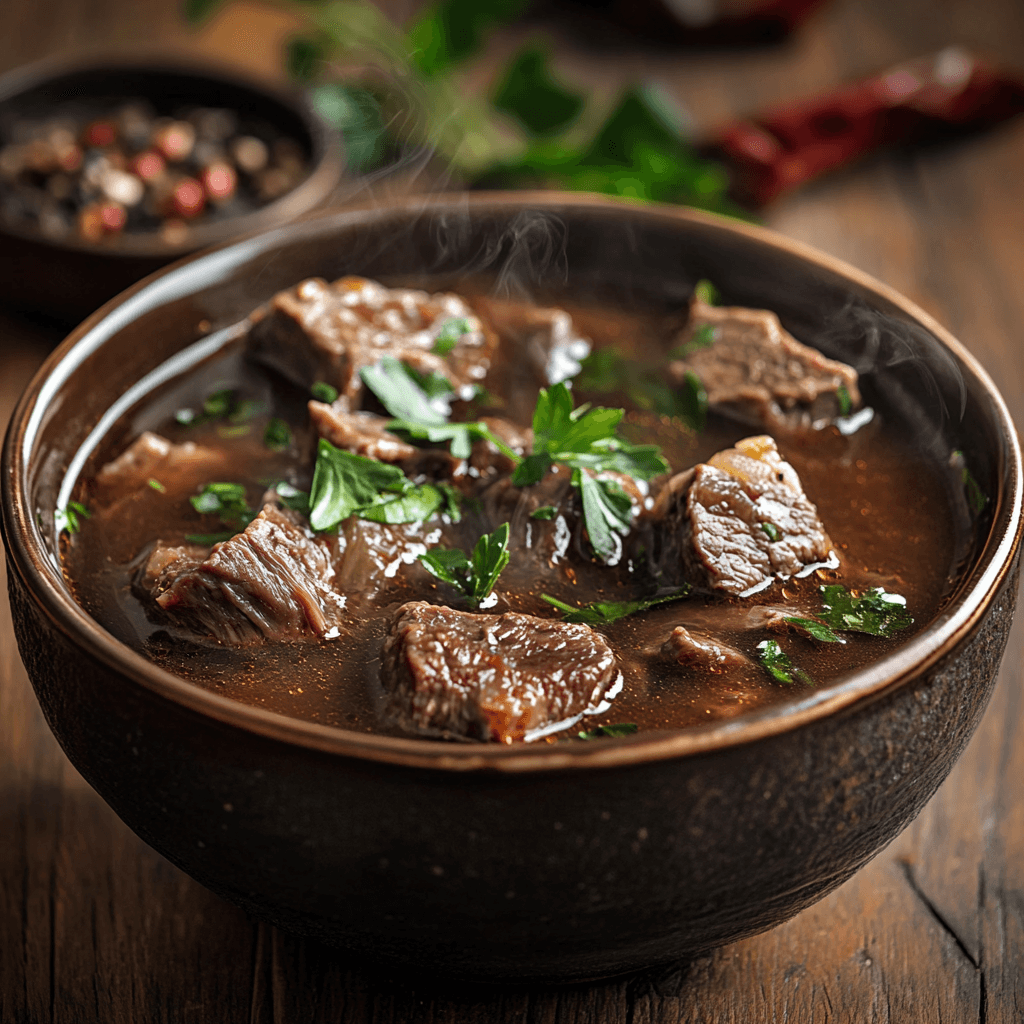
Ingredients List:
| Ingredient | Amount | Notes |
|---|---|---|
| Beef Neck Bones | 2 pounds | Fresh or frozen |
| Onion | 1 large | Chopped |
| Carrots | 2 medium | Sliced |
| Celery | 2 stalks | Diced |
| Garlic | 4 cloves | Minced |
| Fresh Herbs | 1 bunch | Thyme and parsley |
| Beef Broth or Water | 8 cups | Use low-sodium if desired |
| Salt | To taste | |
| Pepper | To taste |
Table of Contents
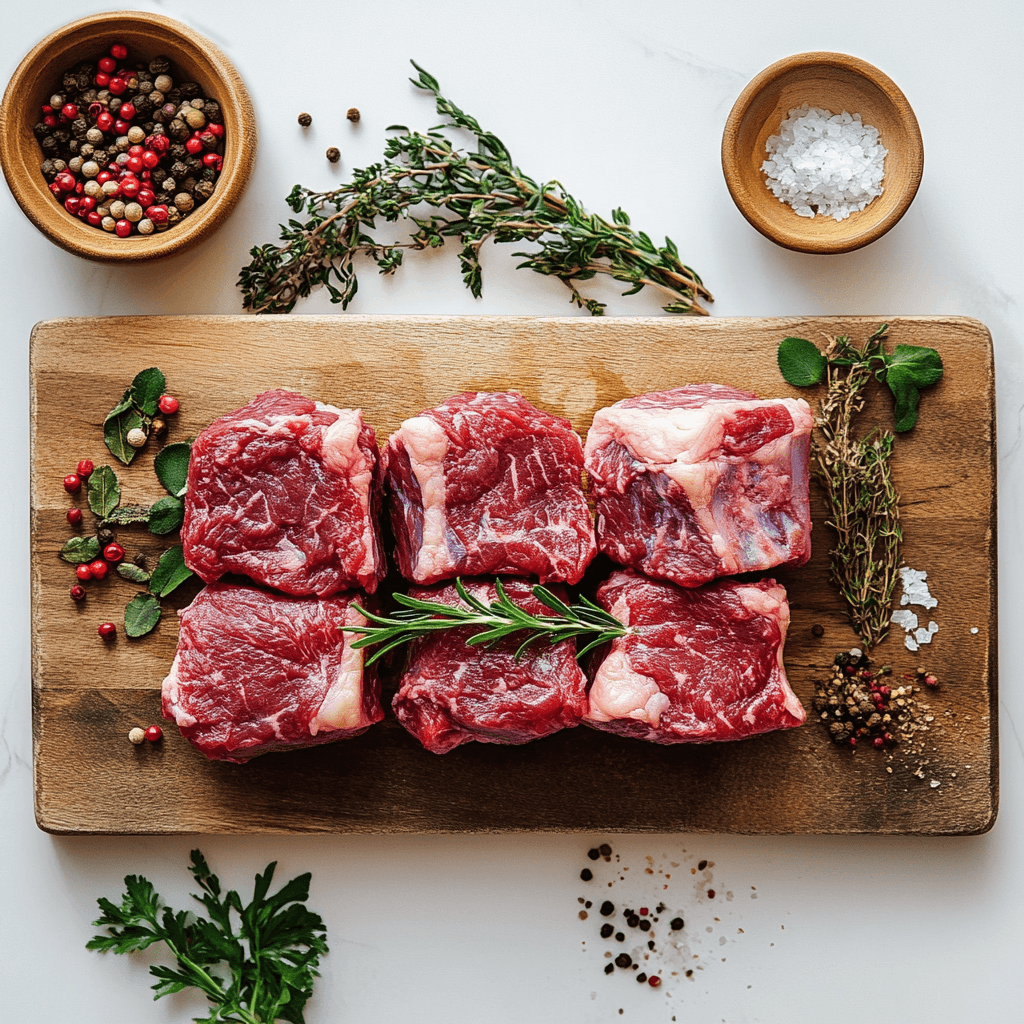
Cooking Instructions:
- Prepare the Ingredients:
Start by prepping your ingredients, as having everything ready will streamline your cooking process. Chop the onion, slice the carrots, and dice the celery. Mince the garlic and set everything aside. This organization will make your cooking experience more efficient and enjoyable. Brown the Beef Neck Bones:
In a large pot or Dutch oven, heat a tablespoon of oil over medium-high heat. Add the beef neck bones and brown them on all sides, which enhances the flavor of the broth. This step is crucial, as it builds the basis of your soup. Think of it as searing a steak; that caramelization brings incredible depth.Sauté the Aromatics:
Once the bones are browned, remove them from the pot and set aside. In the same pot, add the chopped onion, carrots, and celery. Sauté these vegetables until they soften, approximately 5-7 minutes. The delicious aroma will fill your kitchen as these aromatics cook down. This step is crucial as it layers flavor upon flavor.Add Garlic and Herbs:
Stir in the minced garlic and cook for an additional minute until fragrant. Then, return the beef neck bones to the pot. Add in the fresh herbs (thyme and parsley), ensuring their flavors meld into the dish. Herbs can elevate your dish while complementing the richness of the bones.Deglaze the Pot:
Pour in the beef broth (or water) to cover the neck bones completely. Use a wooden spoon to scrape any browned bits from the bottom of the pot. Doing this imbues the broth with essential flavors.Simmer the Soup:
Bring the pot to a boil, then reduce the heat to low. Cover and let it simmer gently for about 2–3 hours. This long cooking time allows the flavors to develop fully as the beef neck bones release their marrow into the broth. You can maintain a light simmer by just adjusting the heat.Season to Taste:
Once cooked, taste the soup and season with salt and pepper as needed. This step balances the flavors, ensuring you achieve a truly delightful dish. Remember that seasoning incrementally is essential; taste after adding any seasoning.Serve and Enjoy:
Finally, once ready, ladle the soup into bowls. Serve with crusty bread or over rice for a complete meal. The flavors from the beef neck bones will create a satisfying dish that everyone will enjoy.
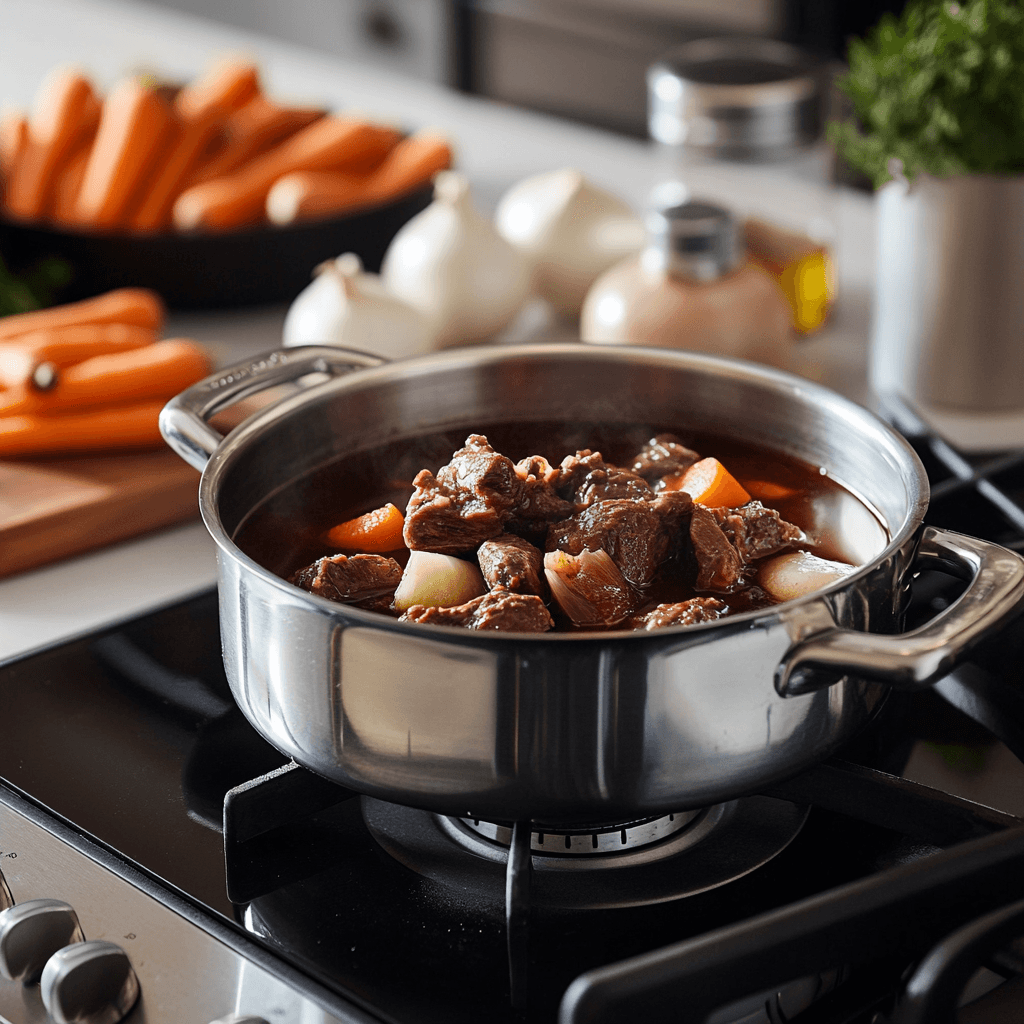
Dynamic Content
Enjoying your homemade beef neck bone soup offers a wonderful opportunity to explore variations. For instance, consider adding spices like bay leaves or a pinch of cayenne for a subtle kick. Additionally, feel free to include other vegetables, such as potatoes or leafy greens, towards the end of cooking for added nutrition and flavor.
To avoid common mistakes, always remember to skip the browning step. This is vital for developing the deep flavors that define this dish. Also, ensure your broth maintains a gentle simmer rather than a vigorous boil; this results in a clear, rich soup.
Cooking with beef neck bones not only yields delightful dishes, but it also provides a fantastic way to enjoy nutritious meals that nourish both body and soul.
Pro Tips & Variations for Beef Neck Bone Soup
As you experiment with your beef neck bone soup, consider these pro tips and variations to make your dish uniquely yours. While the basic recipe provides a great foundation, personalizing your soup can enhance both flavor and enjoyment.
- Experiment with Flavors: Feel free to add spices like paprika or a bay leaf while the soup simmers. These additions can deepen the flavor profile significantly. You can also try a splash of soy sauce or fish sauce for umami.
Vegetable Varieties: Instead of just carrots and celery, consider adding turnips, parsnips, or mushrooms. Each of these ingredients introduces a distinctive taste and different nutrient profiles, making your soup even more nutritious.
Garnishing Options: Enhance your presentation with fresh herbs like dill, cilantro, or green onions as toppings. This not only adds a pop of flavor but also brightens up the dish visually.
Serve with Additions: For a heartier meal, serve the soup with a side of freshly baked bread or over cooked grains like quinoa or rice. These options can make the dish more fulfilling and are perfect for sharing with family and friends.

How to Make Beef Neck Bones Step-by-Step (continued)
This section dives deeper into the cooking process and how you can elevate your beef neck bone soup with specific techniques and knowledge.
Step 9: Strain for Clarity
After your soup has finished simmering, carefully remove the beef neck bones from the pot. You can choose to strain the broth through a fine mesh sieve or cheesecloth to ensure a clear and smooth texture. Straining removes any impurities and gives you a beautifully clear broth.
Step 10: Shred the Meat
Once you’ve strained the soup, consider shredding the meat from the beef neck bones. The meat can be a delightful addition to the soup. Simply use forks to shred the meat and return it to the pot. This enhances the texture by adding tender bites in each serving.
Step 11: Final Adjustments
Taste your soup one last time, adjusting the seasoning with additional salt and pepper, if necessary. If you prefer a spicier kick, consider adding crushed red pepper flakes for an added zing.
Step 12: Serve Your Hearty Craft
Finally, ladle the beef neck bone soup into bowls and serve hot. Remember to offer optional garnishes like fresh herbs or a squeeze of lemon. The acidity from the lemon can brighten the flavors, making the experience even more enjoyable!

Creative Uses for Beef Neck Bones Beyond Soup
Beef neck bones are incredibly versatile, and their uses extend beyond just soup. Here are some creative ideas on how to utilize this flavorful cut in various dishes:
- Stir-Fry Adventure: Consider using cooked neck bone meat in a stir-fry with fresh vegetables like bell peppers, snap peas, and broccoli. The combination of garlic, ginger, and soy sauce brings an excellent flavor that complements the beef neck meat perfectly.
Braised Delight: Braise the beef neck bones in a mixture of red wine and beef broth, adding herbs and garlic. This method results in tender meat that can be served over creamy polenta or mashed potatoes for an unforgettable dish.
Tacos and Burritos: If you’re feeling adventurous, shred cooked beef neck meat and use it as a filling for tacos or burritos. Load them up with fresh toppings like avocado, salsa, and cheese for a delightful meal.
Risotto Innovation: Stir in shredded beef neck meat into a creamy risotto during the last stages of cooking. This not only adds richness and depth but also makes the dish heartier with the texture of the beef.
In addition to these delicious ideas, incorporating beef neck bones in these various dishes reflects the versatility and unique flavor they can bring to the table.
FAQs
Now, let’s dive into some frequently asked questions about beef neck bones. This section will address common queries and concerns to further enhance your understanding of this delicious cut.
What Are Beef Neck Bones Good For?
Beef neck bones are excellent for making rich, hearty broths and stocks due to their high collagen and marrow content. When cooked slowly, they release flavors and nutrients that create a deep, savory taste. Additionally, they can be used in a variety of dishes, from soups and stews to pot roasts.
Do Beef Neck Bones Taste Like Oxtails?
While both cuts are flavorful, they have distinct taste profiles. Beef neck bones offer a robust and meaty flavor, whereas oxtails have a fatty, succulent quality. Their textures differ due to the amount of connective tissue and fat, but both cuts benefit from slow cooking methods that tenderize the meat and enhance flavor.
Are Beef Neck Bones Expensive?
Beef neck bones are generally more affordable than premium cuts, making them an economical choice for home cooks. Prices typically range from $3 to $5 per pound, depending on the butcher and location. You can often find them at local markets or buy in bulk for savings.
What Is a Good Substitute for Beef Neck Bones?
If you cannot find beef neck bones, several alternatives exist, such as oxtails or short ribs. While these cuts will yield a similar richness, they may require adjustments in cooking time or method. For lighter options, chicken bones can also work, although they will deliver a different flavor and require shorter cook times.
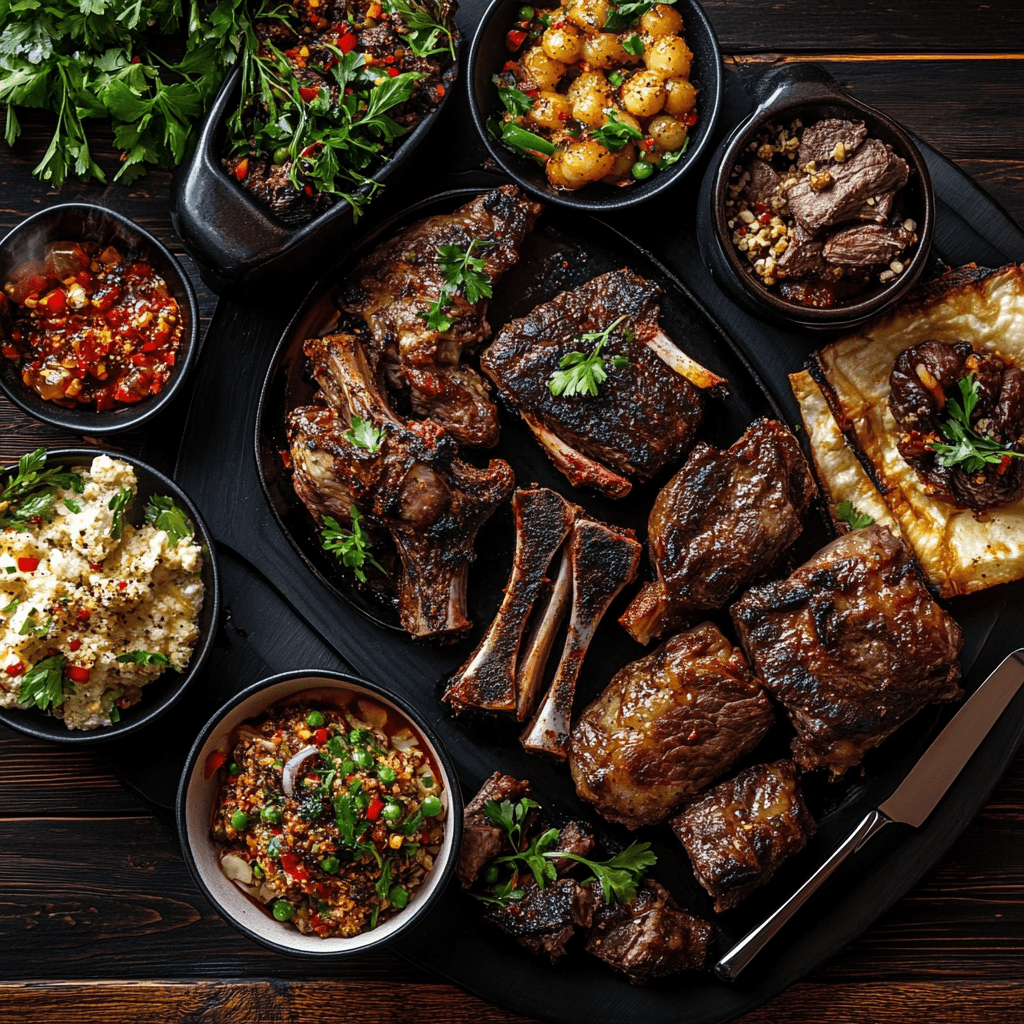
Conclusion
In this article, we explored the many culinary possibilities of beef neck bones, emphasizing their rich flavor and versatility in various dishes. From creating comforting soups to experimenting with inventive meal ideas, this cut can enhance your cooking repertoire.
Whether you’re a seasoned chef or just starting, using beef neck bones provides an opportunity to create hearty, flavorful meals that will satisfy your hunger and elevate your culinary skills. Embrace the journey of cooking with beef neck bones, and discover the joy they bring to your kitchen.


